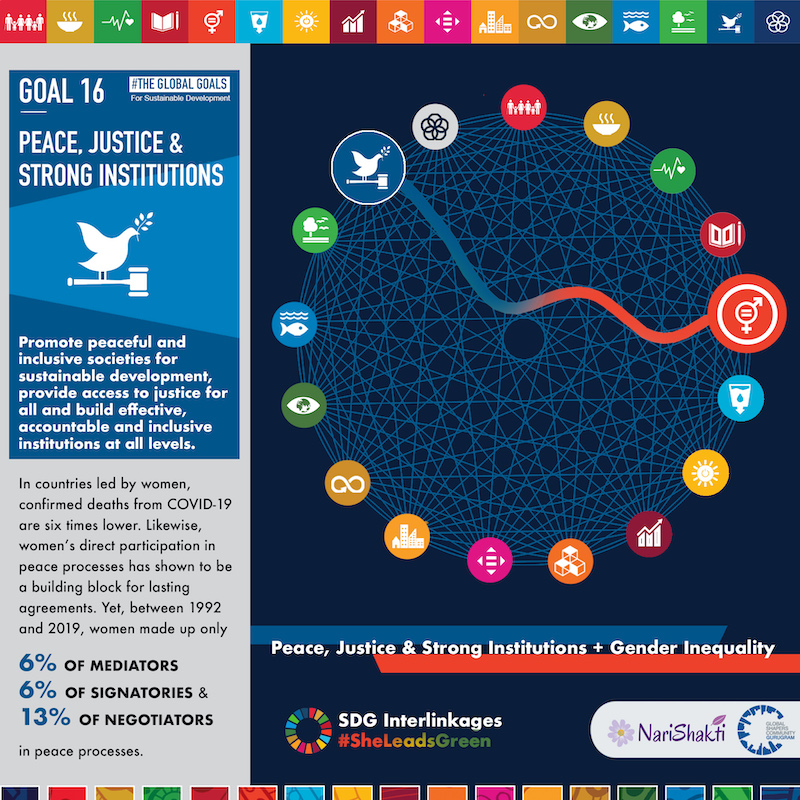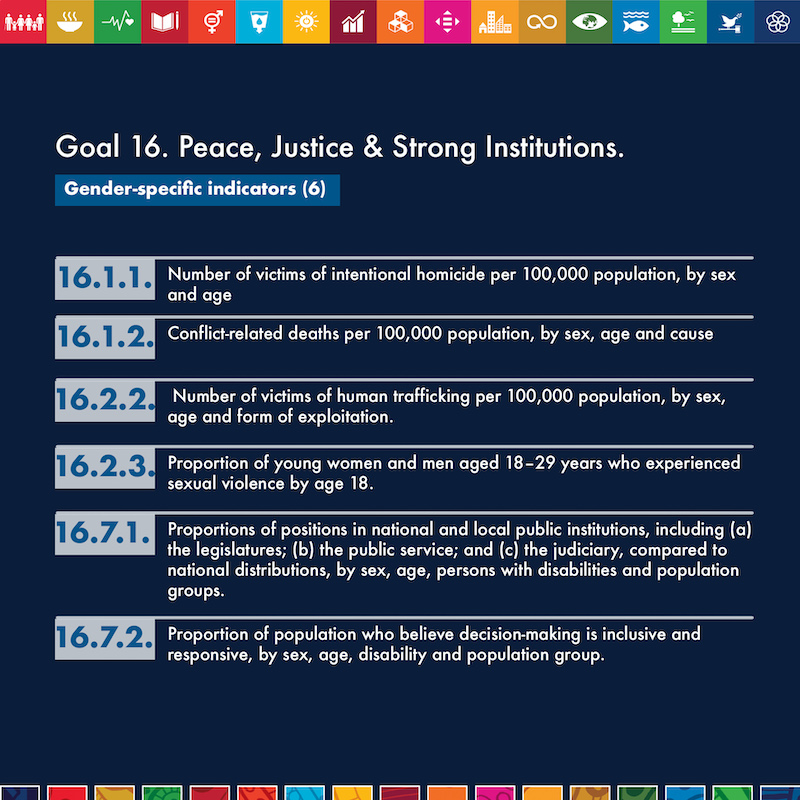
Gender parity for peace, justice, and strong institutions (SDG 16)

Why do we need to look at peace, justice and strong institutions from a gender lens?
- SDG 5 underlines the importance of gender equality in strengthening the rule of law. At the same time robust and responsive legal frameworks and institutions based on the rule of law are imperative in achieving gender equality and women’s empowerment.
- They are important in protecting citizens from different forms of violence, including gender-based violence, and controlling corruption and organized crime.
- SDG 16 includes institutional matters ranging from peace to participatory decision making, and each one of these matters for girls and women.
How is peace, justice, strong institutions and gender-linked?
There are 12 targets and 23 indicators to achieve SDG 16. 6 out of 23 indicators are gender-specific.

- Out of 10 targets of SDG 16 on promotion of peaceful and inclusive societies for sustainable development, 3 are directly related to gender.
- Girls and women experience violence during conflict. Legal frameworks fail to adequately protect and promote women’s rights.
- Government institutions that criminalize violence against women (target 16.1) codify their rights to live free of violence.
- The rule of law (target 16.3) requires judicial systems that offer women legal protection. And women are crucial for participatory decision making (target 16.7).
What outcomes can we achieve in SDG 16 if we reach gender parity?
- The prospects for peace for women in many contexts are severely undermined by gender-based violence. Comprising 98 per cent of the estimated 4.5 million people who are forced into sexual exploitation, women are greater victims of injustice.
- During conflict situations, girls and women experience violence not only from combatants, but also the civilians.
- Intimate partner sexual violence and domestic violence are known to increase during conflict as well. Studies suggest that about 35% of women experience physical or sexual violence at some point in their lives.
- Gender discrimination in legal systems contributes towards the failure to punish perpetrators of gender-based violence.
- As women have fewer resources to protect themselves, during wars or conflict, they along with children, frequently end up as most displaced and refugee populations.
- War tactics involving sexual violence specifically target the women and children. Women have made significant progress in representation in decision-making, in peace processes as well as in governance.
- The numbers however reflect persistent inequality still. Progress on SDGs requires strong involvement and intervention by government institutions.
- Protecting women’s rights, without exception, in all laws and practices, could lead to peaceful and inclusive societies.
References


